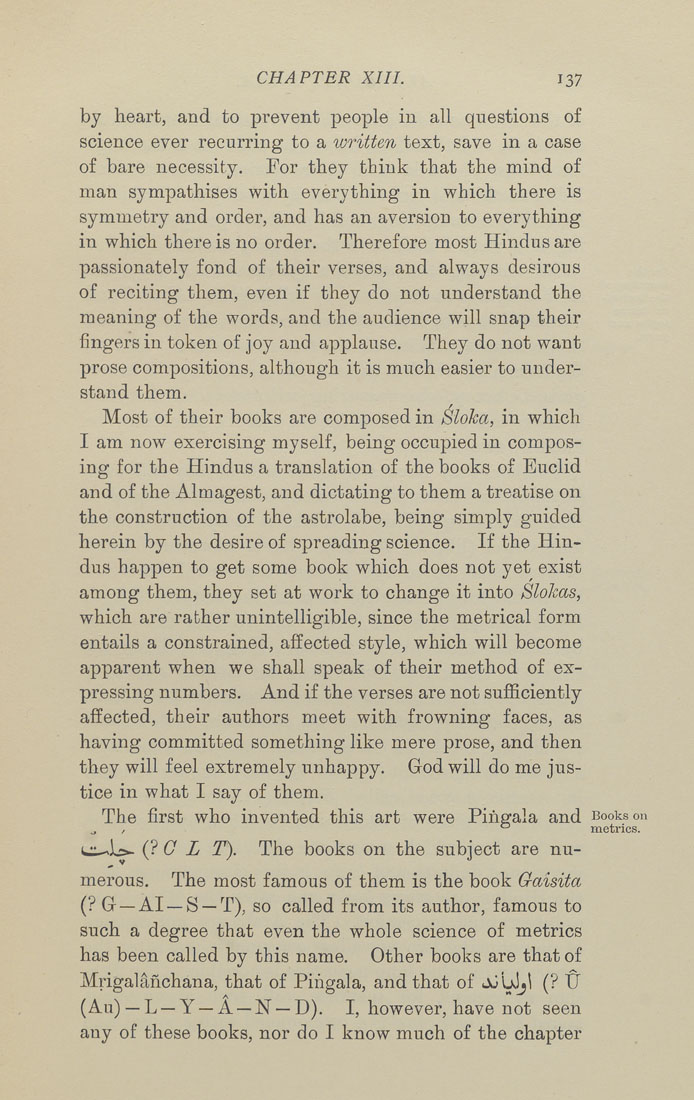Bīrūnī, Muḥammad ibn Aḥmad, Alberuni's India (v. 1)
(London : Kegan Paul, Trench, Trübner & Co., 1910.)
|
||
|
|
|
|
| Page 137 |

CHAPTER XIII. 137 by heart, and to prevent people in all questions of science ever recurring to a loritten text, save in a case of bare necessity. For they think that the mind of man sympathises with everything in which there is symmetry and order, and has an aversion to everything in which there is no order. Therefore most Hindus are passionately fond of their verses, and always desirous of reciting them, even if they do not understand the meaning of the words, and the audience will snap their fingers in token of joy and applause. They do not want prose compositions, although it is much easier to under¬ stand them. Most of their books are composed in Sloka, in which I am now exercising myself, being occupied in compos¬ ing for the Hindus a translation of the books of Euclid and of the Almagest, and dictating to them a treatise on the construction of the astrolabe, being simply guided herein by the desire of spreading science. If the Hin¬ dus happen to get some book which does not yet exist among them, they set at work to change it into Slokas, which are rather unintelligible, since the metrical form entails a constrained, affected style, which will become apparent when we shall speak of their method of ex¬ pressing numbers. And if the verses are not sufficiently affected, their authors meet with frowning faces, as having committed something like mere prose, and then they will feel extremely unhappy. God will do me jus¬ tice in what I say of them. The first who invented this art were Pihgala and Books on / metrics. t::.-^L&- (? G L T). The books on the subject are nu¬ merous. The most famous of them is the book Gaisita (? G —AI —S —T), so called from its author, famous to such a degree that even the whole science of metrics has been called by this name. Other books are that of Mrigalanchana, that of Pihgala, and that of J^'uJjl (? U (All) —L —Y —A —N —D). I, however, have not seen any of these books, nor do I know much of the chapter |
| Page 137 |







